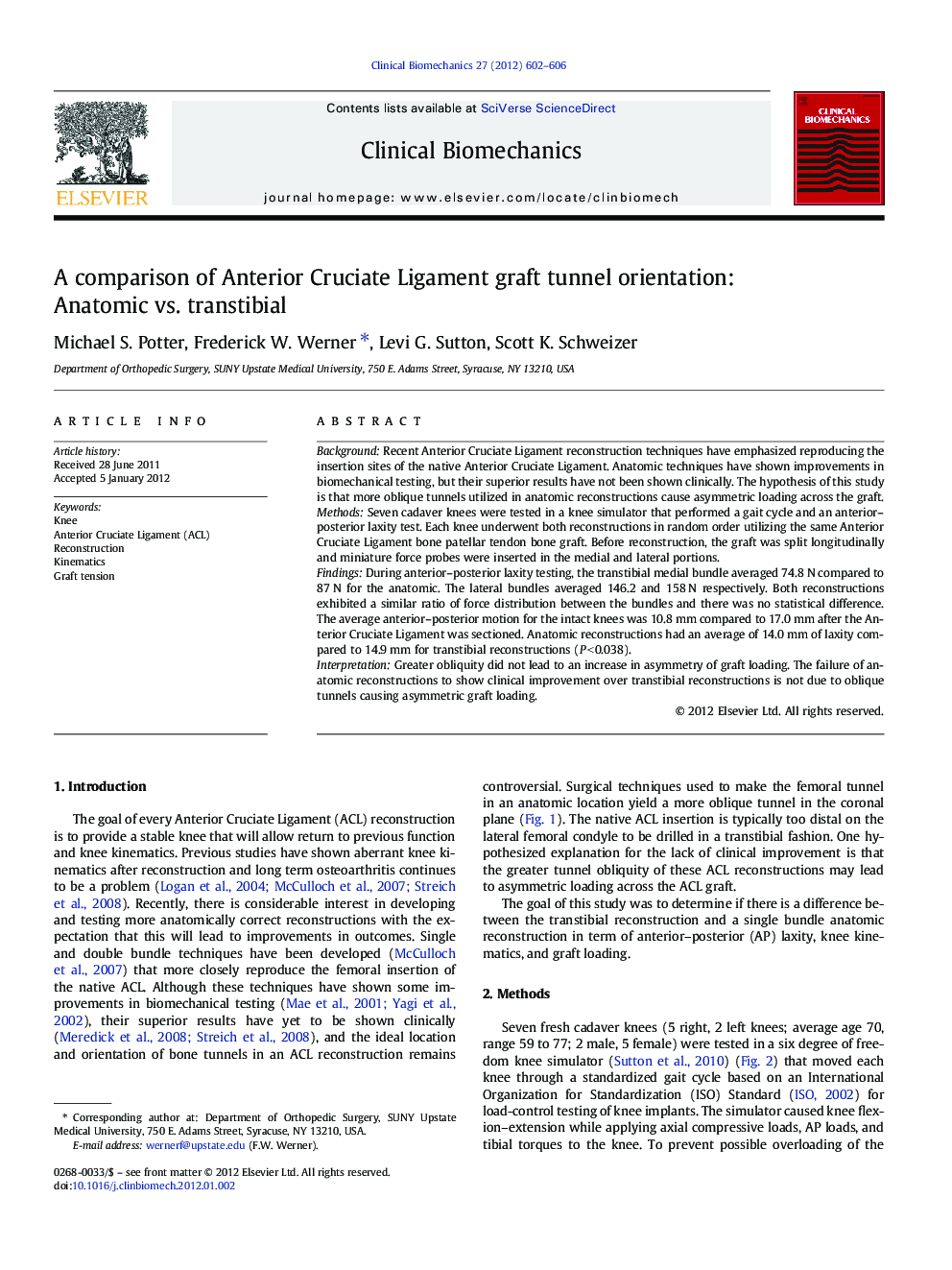| Article ID | Journal | Published Year | Pages | File Type |
|---|---|---|---|---|
| 4050559 | Clinical Biomechanics | 2012 | 5 Pages |
BackgroundRecent Anterior Cruciate Ligament reconstruction techniques have emphasized reproducing the insertion sites of the native Anterior Cruciate Ligament. Anatomic techniques have shown improvements in biomechanical testing, but their superior results have not been shown clinically. The hypothesis of this study is that more oblique tunnels utilized in anatomic reconstructions cause asymmetric loading across the graft.MethodsSeven cadaver knees were tested in a knee simulator that performed a gait cycle and an anterior–posterior laxity test. Each knee underwent both reconstructions in random order utilizing the same Anterior Cruciate Ligament bone patellar tendon bone graft. Before reconstruction, the graft was split longitudinally and miniature force probes were inserted in the medial and lateral portions.FindingsDuring anterior–posterior laxity testing, the transtibial medial bundle averaged 74.8 N compared to 87 N for the anatomic. The lateral bundles averaged 146.2 and 158 N respectively. Both reconstructions exhibited a similar ratio of force distribution between the bundles and there was no statistical difference. The average anterior–posterior motion for the intact knees was 10.8 mm compared to 17.0 mm after the Anterior Cruciate Ligament was sectioned. Anatomic reconstructions had an average of 14.0 mm of laxity compared to 14.9 mm for transtibial reconstructions (P < 0.038).InterpretationGreater obliquity did not lead to an increase in asymmetry of graft loading. The failure of anatomic reconstructions to show clinical improvement over transtibial reconstructions is not due to oblique tunnels causing asymmetric graft loading.
